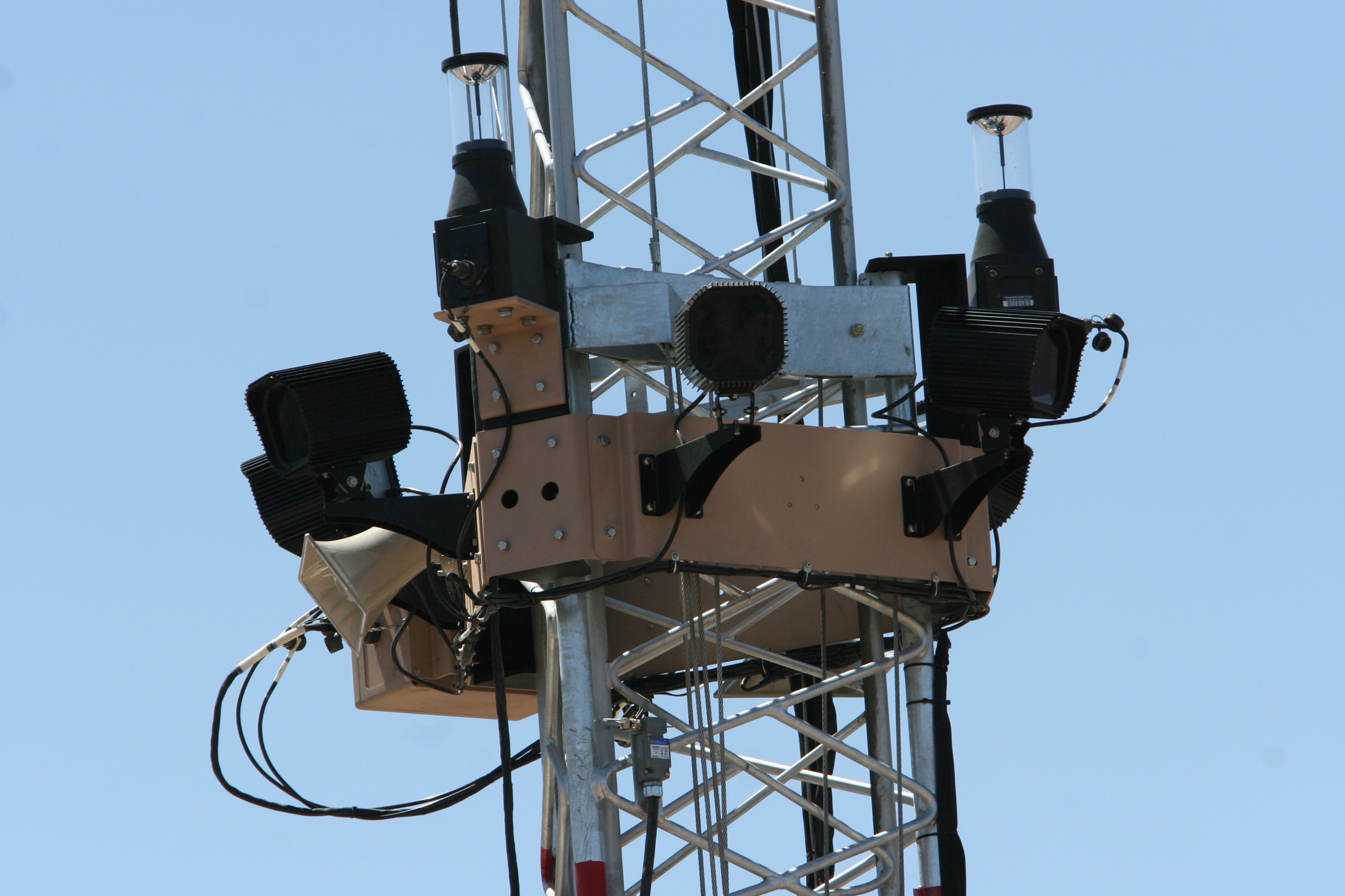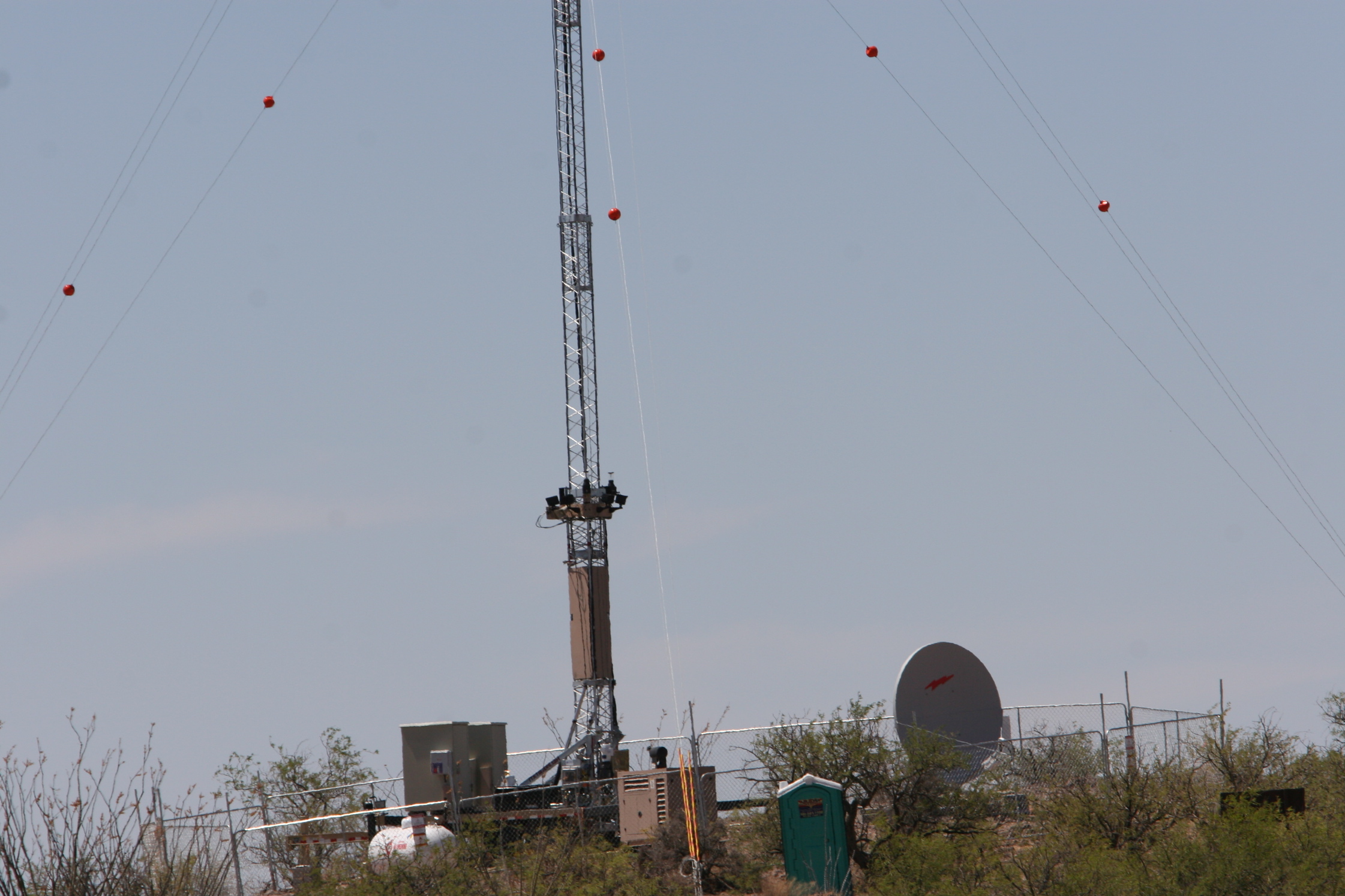THE BORDER REPORT
Several months ago, Arivaca residents woke up to find that their little town had become a front-line in an experimental border force-field. There was little input, some say, little choice. Now, Cochise County residents may be about to get the same treatment.
Guest Commentary
by Rocio Magaña
The Border Patrol held a public meeting last night and had us. A few days ago, I received an email announcing a three-hour public meeting on the “spy towers coming to Douglas/Naco.” On Tuesday night, from 7 to 10, people were to gather in one of Tucson’s Holiday Inns and give their input on whatever they could imagine the environmental impact of SBInet (Secure Border Initiative) would be.
As one of those people who follow, observe, and try to make sense of this border, I have come to enjoy the intensity of these public Border Patrol meetings. The agents always try to remain sensible as they face everything from mundane accusations (BP vehicles kicking rocks onto privately grated roads) to outrageous proposals (deploying snipers to shoot at border crossers as a solution to the immigration problem). So, I prepared myself to witness a three-hour exchange over technology, enforcement, and environmental issues. I could not have been more disappointed.
Sharply at seven, John Fitzpatrick, Assistance Chief for the Tucson Border Patrol Sector, welcomed the fifty or so people in the audience and asked them to hold its comments and submit them at the end of the meeting.
After an intervention that lasted less than 2 minutes, Paula Miller, Environmental Planner for SBInet, took over the microphone and imparted a quick lesson on Environmental Assessments and Environmental Impact Statements. Miller went from the obvious — the mission of the Border Patrol is “to prevent the illegal entry of terrorists, contraband, and, and illegal aliens into the United States” — to the cryptic.
“Tonight, we are seeking your input for any matters or concerns that we haven’t previously looked at or considered. That’s why we asked you here for. Hopefully that will help us refine the scope and definition of this project,” she concluded.
A couple of activists sitting in the row in front of me looked at each other perplexed at Miller’s abrupt presentation ending. We were all hoping she would elaborate on such matters and concerns the agency was looking into, but she didn’t.
With only a little more than 15 minutes into the projected three-hour event, the “meeting” part of the meeting had come to its end to everyone’s surprise.
Fitzpatrick thanked the audience and pointed to a table in the back on which writing instruments could be found. For those with a weak wrist, friendly stenographers awaited to type away people’s insightful comments and concerns. Furthermore, we were informed the agency would not accept any mailings related to the meeting, but they would take any written statements from those savvy enough to have prepared.
All I could think at that time were two things. First, the author of the email announcing the meeting had forgot to mention to bring blue books, No. 2 pencils, and cheat-sheets. Oh, how much better would my two little paragraphs have been with some pre-meeting studying. Then, it occurred to me: We had been used. “Public meeting: Check.”
A few months or years from now, complaints about the project’s implementation or it’s (cryptic) scope might be met with today’s sign-up sheet and brief comments. “This was done with the public’s input,” they might say waving my two unfocused, brief paragraphs in the protester’s face.
And, frankly, that’s just not right.
Rocio Magaña is a PhD candidate from the University of Chicago. Her research focuses on border safety and border security. She can be reached at magana@uchicago.edu


 I am very aware that without these reporters' hard work on this issue, there would be very little dialogue, and we owe them much thanks for getting this story out there. But as one reads the stories about the towers, it always seems like a side-bar to the "real story" of mayhem and disaster, the impact of illegal immigration on the border.
These people seem to love to confuse the issues, but, which parts of the "border war" actually cause mayhem?
Interesting how the words "Illegal immigration" have come to mean the border war, and is now synonymous with drug smuggling, human smuggling, and terrorism.
After reading hundreds of articles on this topic, I found a gem: "The towers, many Arivaca residents contend, will not solve the economic,
social and political problems behind illegal immigration." There it is, one sentence, simple and to the point. Maybe in the future we can get over how quirky we are and start looking at the real problems we face.
Do you really think that some people looking for jobs are really ruining our country?
Do you think the war on drugs is winnable? And do you really think some cameras can defend you from a terrorist plot?
Maybe better questions are needed instead of commentary on the idiosyncracies of a small town.
I am very aware that without these reporters' hard work on this issue, there would be very little dialogue, and we owe them much thanks for getting this story out there. But as one reads the stories about the towers, it always seems like a side-bar to the "real story" of mayhem and disaster, the impact of illegal immigration on the border.
These people seem to love to confuse the issues, but, which parts of the "border war" actually cause mayhem?
Interesting how the words "Illegal immigration" have come to mean the border war, and is now synonymous with drug smuggling, human smuggling, and terrorism.
After reading hundreds of articles on this topic, I found a gem: "The towers, many Arivaca residents contend, will not solve the economic,
social and political problems behind illegal immigration." There it is, one sentence, simple and to the point. Maybe in the future we can get over how quirky we are and start looking at the real problems we face.
Do you really think that some people looking for jobs are really ruining our country?
Do you think the war on drugs is winnable? And do you really think some cameras can defend you from a terrorist plot?
Maybe better questions are needed instead of commentary on the idiosyncracies of a small town.



